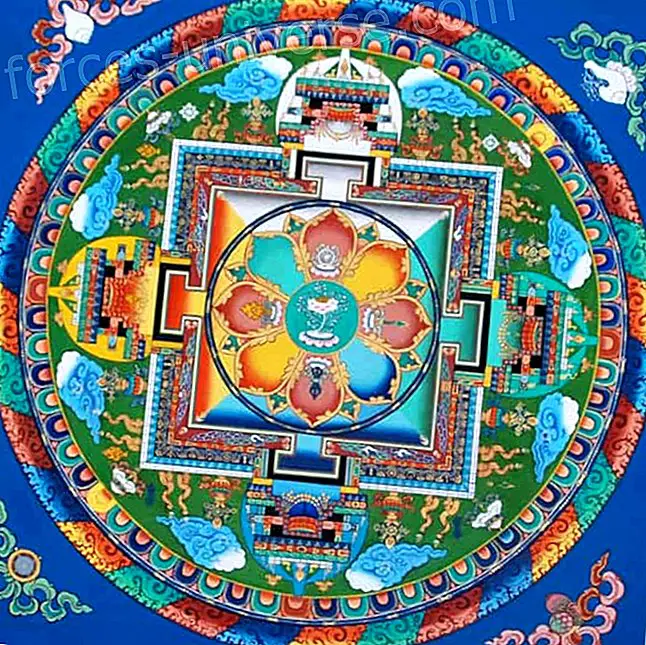
Cognitive science, like the scientific study of mind and knowledge from a systemic and interdisciplinary perspective, beyond the traditional frameworks of epistemology and psychology, found the first model of cognition in cybernetics. Its premise was that human intelligence resembles computer intelligence, to such an extent that cognition can be defined as information processing, that is, the manipulation of symbols based on a set of rules. Although automation has to do with the replacement of the mind, what gives a person autonomy is their ability to define their own rules when making decisions: YOUR SOUL.
Words like "organic" and "autonomous" intentionally raise comparisons with biological systems, whose complexity is hidden in the eyes of the creatures that live within them. The consequence is that digital technology can perform the same feat. Like a digital computer, the mind processes and transforms information, but it also has an intelligent purpose that pursues a preconceived ideal and develops an established plan.
There are still analogies between the fields of computer science and biology. The information processing capacity of DNA constitutes a kind of natural molecular computing, and computer viruses are examples of artificial and digital biology, however the boundaries between nanotechnology, biotechnology, computer technology and cognitive science are disappearing due to to the convergence of these technologies
IBM (an intelligent organization) has had the illusion of taking computing to a level where it mimics the nervous system of the human body, which regulates breathing, digestion, blood sugar levels, temperature, pancreas function, immune responses to germs, etc., automatically and without the people involved being aware of these processes.
What the word autonomous really means in a computer context is reduced to four technological objectives:
- Ensure that computers and networks can configure themselves.
- Ensure that the systems can heal themselves.
- Ensure that the systems can optimize themselves.
- Ensure that the entire network can protect itself.
These four would be the achievements of the human soul as an intelligent organizer.
THE MIND: Brain and heart.

A computer processes information, which means that it manipulates symbols based on certain rules. The symbols are different elements introduced into the computer from the outside, and during the processing of the information there are no changes in the structure of the machine, fixed and determined by its design And construction. The nervous system of a living organism works very differently: it interacts with its surroundings by continuously modulating its structure, so that at all times its physical structure is a reminder of the preceding structural changes. The nervous system does not process information from the outside world but, on the contrary, in its process of cognition creates metaphors: it gives birth to possible worlds.
Human cognition includes language and therefore symbols and representations (logical-linguistic intelligence), but it is not where decisions are made, they are not entirely rational, but are stained by emotions. Human thought is always embedded in the sensations and bodily processes that are part of the spectrum of cognition: an electromagnetic spectrum.
The mind is an electro-magnetic field whose two polarities are the brain (electricity) and the heart (magnetism). The union is achieved through the subjugation of the psychic nature and the restraint of the mind, they are the two aims that Oriental Yoga seeks and that I will propose in this article as five disciplines of intelligence. The domain of the emotional body and the domain of the mental body are two of those disciplines. On the physical level, the psychic presents itself as disorderly electricity and the mental as ordered magnetism.
But on the mental plane it is the opposite: once the emotional body is subjugated the light of Christ becomes visible, in the same way, when the mental body is restrained, the Will of God can be known.
SCIENCE-TECHNOLOGY | DISCIPLINES |
Psychology- Therapeutics | Personal domain |
Sociology- Dramaturgy | Shared vision |
Anthropology-Electronics | Team learning |
Linguistics-Informatics | Mental models |
Mathematics- Intelligence A. | Systemic thinking |
In this article the word discipline will be used in its two meanings: as a domain of knowledge or competence in a society and as a regular practice to apply the habits that lead to understanding. The fifth discipline is presented as a technology of component parts, such as modules of the mind, semi-autonomous devices for information processing.
PERSONAL DOMAIN
This discipline has its foundations in psychology and oriental yoga techniques. Five rules govern the life of personality and constitute the foundations of character, which together with the five commandments make up the Hindu correspondence of the ten Jewish commandments and cover the life of the disciple in probation. The five commandments refer to the external world, the disciple's relationship with his fellow men, the five rules refer to the inner life, his relationship with God. They could be added the five luminous mysteries proposed by John Paul II, as a Christian counterpart.
COMMANDMENTS | RULES | MYSTERIES |
Not to offend | Purity | The baptism |
Not lie | Happy | Marriage |
Do not steal | Aspiration | God's kingdom |
No lust | Devotion | The Transfiguration |
No greed | Interpretation | The Eucharist |
The words internal and external purity refer to the three envelopes that veil the Being and must be interpreted in two ways.
SHARED VISION
This discipline has its foundations in dramaturgy and projection techniques. The last three rules of personal domain purify the activities of the human being, leading them to pure action, their purpose is to produce the vision of the Soul and eliminate obstructions. The vision comes in the moments of exaltation and high aspiration, to which most effective people are susceptible, provides the necessary incentive to produce the determination and perseverance that demands the elimination of obstructions.
The word obstacle is more appropriate when referring to the physical, obstruction for the emotional and obsession for the mental (distraction).
OBSTACLES | OBSTRUCTIONS | OBSESSIONS |
Inability | Ignorance | Doze |
Inertia | Selfishness | Confusion |
Doubt | Wish | Obnubilation |
Abandonment | Hate | Stupor |
Sloth | Attachment | Obsession |
Misperception as an inability to correctly perceive and visualize objects as they really are, would be the natural consequence of obstacles. The vision caused by the misperception is of various kinds and only produces confusion until they are replaced by the superior vision.
LOWER VISION | TOP VISION |
The physical vision performed by the physical organ Etheric vision: reveals the aura of health of all forms in the four kingdoms. Clear vision: it is achieved through the superficial sensitivity of the emotional body. Symbolic vision: perception of colors, geometric symbols, vision in fourth dimension and dreams. | The mental vision realized by the third eye. Pure vision: perfect understanding of the cloud of cognitive things. Spiritual vision: it is reached in the world of intuition and takes it beyond the abstract. Cosmic vision: it begins in the world of divine will and favors the precipitation of the world of ideas. |
Passion is the desire for material things and the senses. It is love of sensory perceptions and the attraction of everything that makes man return again and again, to material existence. The disciple must cultivate dispassion, or that attitude of not identifying with any form, but staying apart and detached, free of the limitations imposed by possessions and belongings
Through the dispassion and balance of the pairs of opposites, he frees himself from the temperament, feelings, desires, desires and emotional reactions, characteristic of the life of the common man and reaches the point of peace.
MENTAL MODELS
This discipline has its foundations in computer science and simulation techniques . A model is the representation that is made of a system. The two objectives of an engineer are the flexibility of the design and the effectiveness of the system. The effectiveness of any model used to describe and understand the behavior of a particular system as a whole depends on the degree of precision with which that model represents that system.
The product of an ideal design should be the model that seeks to achieve that ideal. That mental model must have the ability to pursue its ideals with increasing effectiveness in constant conditions or in changing conditions; It must have the ability to learn and adapt. The human mind is an autonomous administration system that makes use of practices, methods and processes.
We can relate the practices more specifically, with this stage of the life of the aspirant who is in the trial period, purification, while the methods are related to the final stages of discipleship. When practices and methods are followed, they produce certain changes in the way that real or spiritual man occupies, but they are not the main cause of the transfer of his consciousness to the soul aspect, which moves him away from the body aspect. Mental processes are what allow synthesis to be achieved.
PRACTICES | METHODS | PROCESSES | |
For Obstacles | For Obstructions | Recognition | Classification |
Concentration | Altruism | Concentration | Ordination |
Significance | Discrimination | Understanding | Hierarchy |
Meditation | Dispassion | Meditation | Analysis |
Self Discipline | Detachment | Contemplation | Synthesis |
Cognitive psychology got to the point of developing the three qualities of sacrifice: Dispassion, Discrimination and Detachment. Cognitive science begins at the moment when discipline is acquired.

TEAM LEARNING:
This discipline has its foundations in mechanics and electronics. Team learning is the ability to act with others collaboratively. It begins with the ability of the members to dialogue, to suspend the assumptions and enter into a genuine joint thought. The dialogue becomes the free flow of meanings through the group.
Performance improves when the team member feels personally committed to the task to be performed and this commitment becomes even more evident when he is allowed to select his goals and participate creatively in making decisions about solutions to A proposed problem. In the case of creative proposals, it is required that the team member be responsible, make a deliberate effort to improve their intellectual performance, propose increasingly high levels of demand and try to understand the reason and meaning of their effort.
So the concept of intelligence is related to that of performance, referring to efficiency: the combination of creative, verbal and spatial skills of a person.
Due to the existing relationship between motivation and performance, it is important that the task is adapted and produces a sense of achievement, while being careful to include a variety of situations that arouse interest, curiosity, and impose gradual challenges that demand effort and generate personal satisfaction.
SYSTEMIC THINKING.
At its highest level, systemic thinking encompasses a wide and heterogeneous variety of methods, tools and principles, all aimed at examining the interrelation of forces that are part of a common process. This field includes cybernetics and chaos theory, gestalt therapy, the work of Gregory Bateson, Russell Ackoff, Fritjof Capra, Ludwig Von Bertallanfy, and a dozen practical techniques for process graphing. These diverse approaches share a guiding idea: the behavior of all systems follows certain common principles, whose nature we are discovering and analyzing. In 1956 the expression “artificial intelligence” was coined, which included previously disparate fields such as operational research, cybernetics, Logic and computing. But while artificial intelligence is about solving problems that would be solved in the frontal lobe of the brain, autonomic computing has more in common with the autonomic nervous system. The art of systemic thinking consists, among other things, in assessing the consequences of the line of action we choose.
By its nature, systemic thinking points to interdependencies and the need for collaboration. As the team continues its work, it may be necessary to include new members, especially people who were previously seen as a rival but now play on the same side.
In systemic thinking, each image tells a story. From any element of a situation (or "variable"), you can draw an arrow ("links") that represent the influence on another element. At the same time they reveal cycles that are repeated again and again, improving or worsening situations.
At the beginning of this article, reference was made to cybernetics as a science that studies systems, processes and information, but while cybernetics are interested in organisms, leaders are interested in organizations. A human being is a system composed of several subsystems with their processes. The nervous system works like the body's software, together with the endocrine and immune systems regulate the body's autonomous processes such as digestion and breathing. The myriad of impulses, hormones, neurotransmitters and other messenger molecules are the information that is processed by the software. All this constitutes the visible programming of the body. But where is the programmer? Our memories are available to the programmer, who stays above memory, silently observing life, taking into account experiences, always ready to house the possibility of new choices.
The immune and nervous systems function as the body's main controls. Who makes the real decisions is the intelligence of the body that is invisible.
SYSTEMS | PROCESSES | ATTRIBUTES |
Digestive | Metabolic | Adaptability |
Endocrine | Secretion | Harmony |
Circulatory | Circulation | Knowledge |
Respiratory | Breathing | Idealism |
Nervous | Regulation | Order |
We now have a definition of intelligence that includes its three variants: the analytical capacity to achieve the synthesis of its components, the practical ability to adapt to various contexts, the creative ability to effectively address the novelty after automating the usual activities. The intelligent computer can now understand the computer metaphor with its three functions: I am the programmer, I formulate the program, I execute the program; and begins to demonstrate its effectiveness by fusing his personality with his soul.
AUTHOR'S NOTES
This article is based on the book The fifth discipline of Peter Senge, whose approaches were extended with the ancient aphorisms of Raja Yoga and the current criteria of cognitive science.
According to raja yoga, the mind has all the knowledge to be composed of rhythmic particles, but wrapped with inert and active particles (raja) that have to be eliminated by the purity of breathing. But the mind in turn is the clothing of consciousness, which is discovered through meditation (metacognition).






